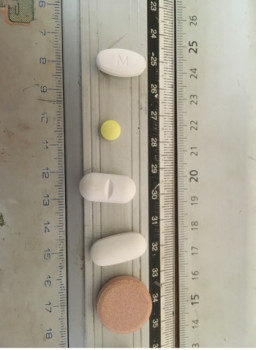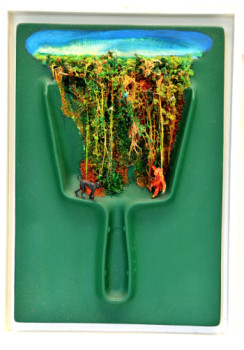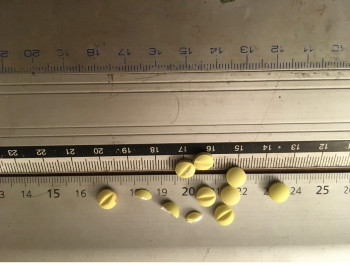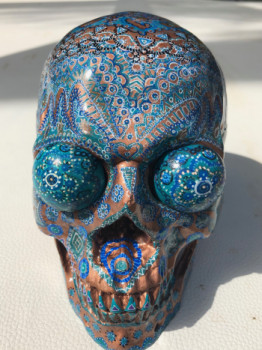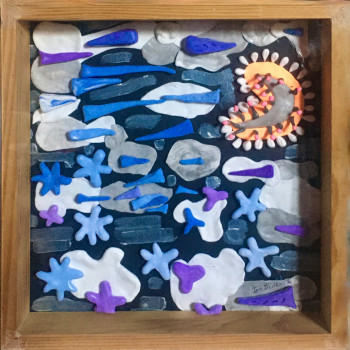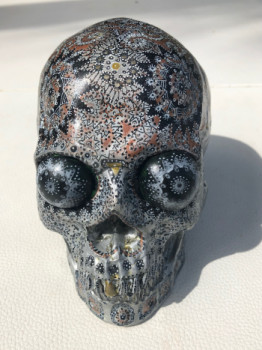
Damien Hirst: the art icon of the 1990s
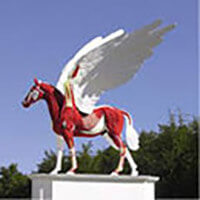
Damien Hirst was one of the greatest provocateurs of the late 20th century , as well as a discordant figure in the history of contemporary art. Charles Saatchi, an advertising mogul who recognized potential in the decaying animal carcasses of Hirst and gave him almost unlimited money to continue, helped the young, essentially unknown artist climb the ladder far and fast.
An eventful childhood
In 1965, Damien Hirst was created. Bristol, England. Shortly after his birth, his family moved to New York. Leeds, where he spent most of his formative years there. When his parents divorced when he was 12, his mother was the only person left behind. raise him. He is a turbulent young man who steals twice and has difficulty getting through his life. go to school, but he showed potential in the arts and ultimately chose to go to college. university. As a young adult In the late 1970s and early 1980s, Hirst took a close interest in British punk music and agrave; the social scene, attracted to people by its rejection of conventions and its direct and cruel subjects. Although her mother once transformed her one of the Sex Pistols' LPs in cross-section Fruits, he was a big fan of the group and frequently referred to them in his later writings.
The influence of death on his works
From 1986 to; 1989, Hirst studied for a B.A. in Fine Arts at Goldsmiths, University of London from London, after having seen his initial request refused. He completely absorbed himself. in his studies and quickly rose to prominence among Goldsmiths students, becoming involved in a number of organizations and organizing events for them. He worked part time in a morgue in Leeds during the summers, an experience which had a significant impact on the ideas and supplies he ultimately used in his art. From time to time he drew corpses and specimens, as is customary for painters Westerners, and this work also brought him the technical know-how that he would later use to transform biological specimens into sculptures.
It was He was the main organizer of a group exhibition entitled Freeze during his second year at the University. Goldsmiths. His career would change after this performance. The exhibition included pieces by sixteen other students in addition to his own, including Sarah Lucas, Fiona Rae and other up-and-coming postmodern artists. They will be recognized as a group for their relentless approach to art, using astonishingly bizarre materials and bringing ideas that challenge what constitutes art. art.
Successful agreements
Saatchi has started supported Hirst in 1991 and offered to pay for whatever the artist chose to create. The agreement between the two men began bear fruit immediately. The sculptor artist has obtained recognition and praise from many sources. abroad following the inaugural exhibition of Saatchi Young British Artists in 1992. His first funded project was by Saatchi was a large installation titled The Physical Impossibility of Death in the Mind of Someone Living which featured a tiger shark ;served in a large glass exhibition. Hirst was nominated for the Turner Prize, which is awarded to contemporary British artists under the age of 50, for this work. Although he was unsuccessful, he eventually won the competition. the prize in 1995. He very quickly became a polarizing and controversial figure. in the world of modern art.
His best-known and most controversial works are the sculptures of preserved dead animals ;s. For example, in 1995, health officials The New York City public banned the performance of Two Fucking and Two Watching because they feared vomiting among the guests. He persisted in the pursuit of surprising and difficult work which has given rise to intense love-hate emotions from the community artistic.
His current work
Beginning in the late 1990s, a number of YBA band members rose to prominence as independent superstars, noted for their arrogance, swearing, and rock 'n' roll behavior. The Sid Vicious of the group, Hirst, was known for his wild conduct, including encounters with a naked conservative and supposedly having lowered his body his pants to shove a chicken bone into his foreskin in a Dublin bar.
When its commercial partnership with Saatchi ended in 2003, Hirst raised concerns about its relationship with Saatchi. even more controversy. The sculptor did not like the way in which Saatchi exhibited his works in his new gallery, and he was particularly irritated by them. than a Mini Cooper which had been personalized to look like one of his paintings spot is presented as a legitimate work of art. He withdrew all of his pieces in the exhibition, which prompted Saatchi postpone an important Hirst retrospective until later the Tate Modern. The artist made the decision to part ways with his long-time supporters and paid the price. a significant price to repurchase several of his first pieces.
Since the dissolution of his association with Saatchi, Hirst has had little difficulty in moving forward. finding patrons and clients for his works. Even if his work continues to grow. Being extremely divided, he innovates and adapts to meet the expectations of an audience that wants him to take risks, while being wise enough to see the intrinsic importance of public spectacle. He entered in the history of living artists in September 2008 when he sold the entire work. from the production of B eautiful Inside My Head Forever exclusively at Sotheby's auction.
Today, he shows no signs of slowing down. He became a prominent figure in the community. British Culinary School and funded and designed a number of restaurants, some of which were more successful than others. He also created is a company called Other Criteria, which creates limited edition collectibles. reasonable prices. He launched the Newport Street Gallery in south London in October 2015 to exhibit his own collection of over 3,000 Works of art.
Découvrez quelques oeuvres inspirées de Hirst
